Snapshot
Age: 48
Status: Married with two children (boy 14 and girl 11)
Biggest brand achievement: Doubled size of Lipton Brisk in two years, making it a $1bn brand. This included the first ever brand partnership with Eminem. After the success, I was contacted by Harvard Business School, who then created a case study from the Brisk story, which is taught each year as part of their MBA programme
Favourite Food: I love Indian food
Best current ad: I have to pick a Superbowl 2015 ad and the ongoing success of Doritos - so this year’s winner is Doritos Middle Seat by Scott Zabielski. What makes it funny is it’s so relatable
Best thing about working in US: Apart from being in New York, one of the best cities in the world, it has to be its optimistic, can-do attitude - it’s infectious
It’s five years since one of the most controversial takeovers in business history and the new (and first ever) woman at the helm of the Cadbury empire has a sticky problem on her hands.
No, it’s not the 250 redundancies resulting from years of negotiations with unions, or the battle to modernise Bournville’s production lines, or even forging a new mega-coffee brand jv with Douwe Egberts to take on Nestlé.
Instead, it’s eggs Mary Barnard needs to crack. Specifically, chocolate creme ones. The former Hovis, Walkers and PepsiCo marketeer turned Mondelez International North Europe boss is having to defend the company from apoplectic customers after it dared to mess with the recipe for the Cadbury Creme Egg, then risked further furore by reducing the pack size from six to five.
‘Cheap chocolate imitation,’ screamed the Daily Mail. A classic case of facts not getting in the way of a good story, replies Barnard. “The reality is we’ve been making them for 45 years and we’ve made them with a number of different chocolates. Last year, after doing some consumer research, we decided to move to the traditional Cadbury chocolate [rather than Cadbury Dairy Milk], which is actually the type of chocolate we’ve used for most of those 45 years.”
Is Barnard shell shocked by the hysteria that’s developed on social media? Not at all. “The real thing it shows is just how loved our brands are,” she says. “People actually think they own them. We’ve had people posting videos on YouTube, writing songs about them. Of course it reinforces the need to stay customer focused but I tend to follow consumer sentiment rather than social media sentiment and the fact is the eggs have been flying off the shelves this year.”
“I tend to follow consumer sentiment rather than social media sentiment, and the fact is the eggs have been flying off the shelves”
As for the downsize to five, it was driven by “economics”, adds Barnard. “Like many businesses we’ve had some pretty massive commodity increases over the last few years. But we have also reduced our rsp, so it’s not just a case of people paying more for less. A lot of people have been saying, how do you sell eggs that aren’t in half a dozen, and that surprised me because we’ve sold Creme Eggs in threes, fours, eights, sixes, 12s. It’s strange this linkage to a real egg.”
Barnard is refreshingly upfront about the task facing her in what she describes as a “pivotal year” for Mondelez. Since its split from Kraft Foods Group Inc in 2012, US parent Mondelez International has battled sluggish growth in some of its European markets, rising commodity costs, as well as the impact of the high dollar. But in the UK the success of NPD such as Marvellous Creations and Cadbury Dairy Milk with Oreo saw volume sales of the market leading Cadbury Dairy Milk brand rise 14% year on year last year [Nielsen 52 w/e 12 October], making it a star performer globally.
Now Barnard, whose own star rose from being the marketing director of Walkers crisps to heading the New York-based Pepsi-Lipton partnership - a joint tea venture with Unilever - wants to up its game still further by tapping new opportunities for domestic growth.
Investment
A brief spell as Mondelez’s Nordic boss ended with her being put in charge of a consolidated new Northern Europe division (including the UK and Ireland) of the company last September, and her return has coincided with a £75m investment into the iconic Cadbury factory in Bournville. It was built in 1879 but now resembles a futuristic building site, which by the middle of next year will boast four new state-of-the-art lines for chocolate manufacturing.
In the process Mondelez secured a deal that left the Unite union celebrating after marathon negotiations over changes to working conditions. Some staff took home redundancy packages of £100,000 plus and Mondelez agreed to no compulsory redundancies. In return, says Barnard, it will now benefit from much needed modernisation.
“This is huge,” says Barnard. “It’s transformational for Bournville and secures the next generation of manufacturing. When we first brought Bournville in, the manufacturing costs were something like twice some of our other plants in markets like Germany. It was still producing on lines that were many decades old.”
Barnard claims the investment has finally “put to bed” any residual fears that the takeover of Cadbury would suck innovation and investment from the UK to the US and other territories. “Unlike some of our competitors, trying to maintain a strong linkage and a strong foothold in the market is incredibly important to us,” she says.”We want to continue to be a manufacturer in these countries.”
In the past two years alone, Mondelez has spent £17m across its three new R&D facilities, £6m on its Sheffield biscuit manufacturing operation (now making Belvita and Oreo) and £40m in Banbury, which brought Tassimo manufacturing to the UK. “For many of the people who came from the original Cadbury business, to see the partnership we have now is incredible,” she says. “The partnership we’ve built with our employees and the union is unprecedented.”
Barnard smarts at suggestions that with many of its most recent successes using products originating from the US and Europe - think Oreo, Ritz, LU and Chips Ahoy - the UK has been left wanting in terms of innovation. “The UK is actually the heart of innovation within Mondelez,” she claims. “We have three global innovation centres in the UK, for coffee, chocolate and a science centre at Reading with 750 R&D jobs. We hugely punch above our weight. Marvellous Creations, for example, was designed in Birmingham, launched in Australia, then came back to the UK. Being able to leverage other brands and fuse them together has been a huge driver.”
The big biscuit opportunity
Still, there are lessons to be learned. Barnard’s eyes sparkle at the prospect of Mondelez importing some of its dominance in the biscuit category from over the pond. “Biscuits have been a massive driver for growth and we’re the biggest manufacturer of biscuits in the US. So we have a great opportunity to bring some of our winning brands across. We have a 30% share in confectionery, but only a 7% share in biscuits and we have the number one biscuit portfolio in the biggest market in the world. So there is a huge opportunity for us.”
The growth of brands like Oreo is also creating a younger consumer for biscuits, which “have been a bit too grandma at the biscuit barrel in the past”. She also talks of creating “positive imagery for younger people”. Such talk won’t sit well with many in the Health lobby, for whom Mondelez is a prime target in the war on sugar, amid claims that confectionery has so far escaped lightly compared with other sectors.
What’s her response? Barnard, with 16 years of crisp and fizzy drink campaigns behind her, slams moves such as the latest wave of shock ads launched against sugar in soft drinks.
“The reality is that for 45 years we’ve made Creme Eggs with a number of different chocolates. Last year we decided to move to the traditional Cadbury chocolate, which is actually the type of chocolate we’ve used for most of those 45 years”
“I absolutely understand that all of us are concerned about finding a good balance. I remember back in my days at Walkers there was an ad with a girl drinking gallons of oil and my view is that there are more proactive ways if you really want to make a change. It’s also about physical activity. I’m a mother of two, my son plays rugby, my daughter is into ballet and dance. They basically eat whatever they like. I don’t believe in demonising foods and I don’t think it works for consumers.”
She also points to the 150 calorie portion cap introduced on single serve confectionery as evidence of how serious Mondelez is about the health debate, promising it will work constructively with whoever wins the election to tackle obesity. But she adds: “We’re very clear that our portfolio is about treats. We’re not sneaking sugar into products, we’re not pretending to be a meal solution, we’re not trying to be a breakfast replacement. And I think a world without treats for myself and my family is not something I would like to see. A bar of chocolate or a biscuit should be part of a normal healthy lifestyle. Just bashing people over the head tends not to change behaviour. Consumers go: ‘I don’t know what you guys are talking about.’”
The British sense of humour means that consumers aren’t the only ones confused. Barnard believes Cadbury’s recent advertising campaigns, including Keith the lip-synching disco king who likes to boogie, have been some of its best ever. “I work for the head of Europe and he was over here and we were airing some of the ads, and my European colleagues were just looking at me strangely. I was like, don’t worry, this is British humour. It’s what I love about Mondelez, it understands it has uniquely British brands.”
One of her biggest adjustments will be to adapt to the changing battleground among the UK’s retailers.
Barnard supports Tesco’s plans for a radical reduction in the range of SKUs on offer in store, claiming it will be the big brands like Cadbury that benefit.
“I think we’re at a point where shoppers are saying ‘OK, there’s too much, it’s too confusing and I don’t have the time to spend trying to find what I want.’ I think big brands that have that big consumer appeal should do well through that sort of change. You should be able to walk down the aisle and find your bar of Cadbury Dairy Milk without having to search for it, but it’s about finding the right balance between that and making sure innovation has the room to breathe.”
One of the biggest trends since Barnard left for the States has been the rise of the discounters, where Mondelez is notable for its shortage of presence. Barnard plays down suggestions it is missing a slice of the action. “We tend to follow where shoppers are going. We do have a number of products available in the discounters, we have developed businesses with Poundland, but frankly we don’t see that chocolate and impulse are as developed in some of the newer entrants as they are in our more established customers.”
As a new entry herself, featuring at number 60 in The Grocer’s recent Power List, Barnard is also relishing the task of being the first woman to lead the Cadbury business, something she admits is not in keeping with its history. “When Cadbury’s first started, when ladies got married they had to leave and then, when they left, they got presented with a Bible,” she says. “So I’m not sure what the old Cadbury brothers would have made of me.”
We’ll never know. But with sales of the controversial Creme Eggs apparently flying, at least her customers seem to approve.







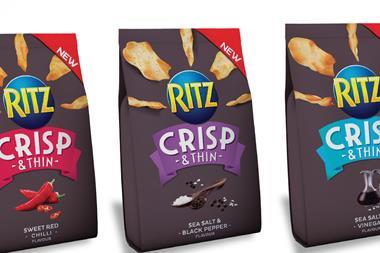
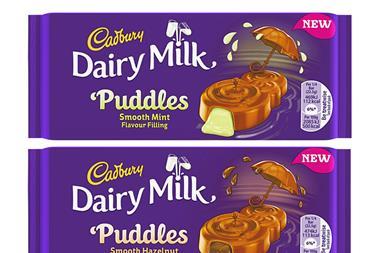
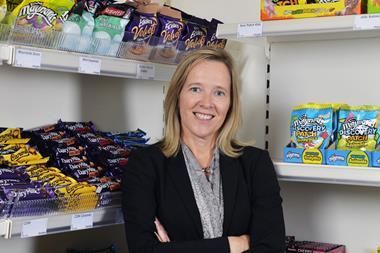



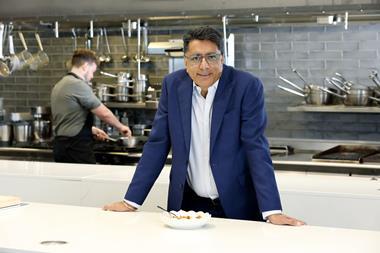

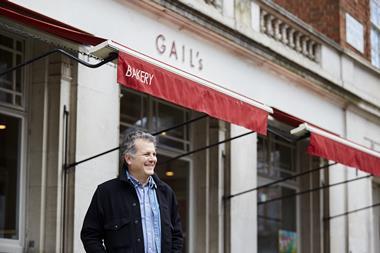

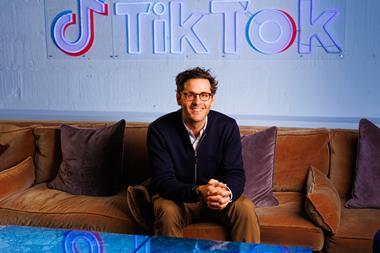

No comments yet